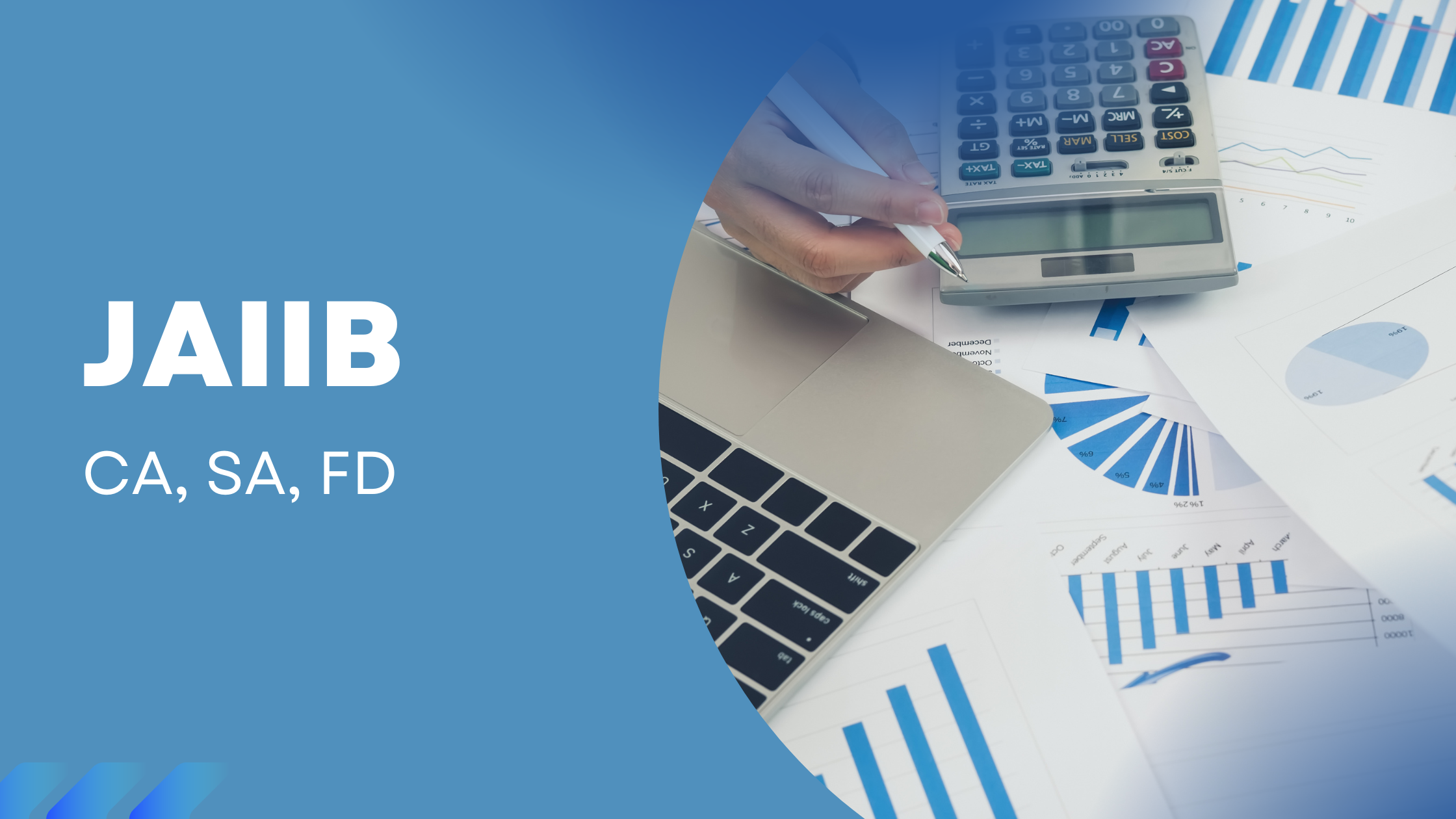JAIIB Made Easy: A Quick Guide to CASA & Fixed Deposits (CA, SA, FD)
TL;DR:
This blog is your compact reference to understand three of the most tested banking products in the JAIIB (Principles & Practices of Banking) paper: Current Accounts, Savings Accounts, and Fixed Deposits. We break down their features, purpose, and exam-relevant details, so you save time and score better.
Welcome to “The Banker’s Laddar”
As you prepare for your JAIIB exams, we understand the value of concise, targeted, and practice-oriented learning materials. In this blog, we’ll help you master CASA and FDs — one of the foundational concepts in the banking sector — in a way that sticks and supports your MCQ attempt
Current Account: Understanding Its Purpose and Eligibility
Current accounts are designed for frequent transactions, making them ideal for:
-
Businesses (private/public)
-
Firms and Traders
-
Educational, religious, and charitable institutions
-
Even minors and illiterate persons (with appropriate handling conditions)
Key Features:
-
Interest: Usually zero.
-
Withdrawals: Unlimited. Operated via cheques, UPI, NEFT, RTGS.
-
Purpose: High-volume transactions, not savings.
-
Overdraft Facility: Commonly offered.
-
Minimum Balance: High (varies by bank type).
-
KYC: Extensive documents like PAN, business proof, etc.
💡 Exam Tip: Expect questions on overdraft facility, eligibility, and documentation norms.
Savings Account: Who Can Open One and Why It’s Popular
Savings accounts are the most common type of account for individuals and households.
Who can open it?
-
Individuals (including minors over 10 years)
-
Senior citizens
-
Low-income groups under schemes like BSBDA
Key Features:
-
Interest: Yes (2.5%–4% annually)
-
Withdrawals: Limited (per RBI guidelines)
-
Purpose: To save and earn modest returns.
-
KYC: Basic ID + address proof (PAN/Aadhaar)
-
Minimum Balance: Generally low, except in zero-balance or BSBDA accounts.
-
Overdraft: Rare; possible if linked to FD or salary account.
-
BSBDA: Free ATM usage, no minimum balance, for financially weaker sections.
💡 Exam Tip: Know the features of BSBDA, interest calculations, and withdrawal limitations.
Fixed Deposits: Your Long-Term Earning Tool
Fixed Deposits (FDs) are time-bound deposits for those seeking higher returns with guaranteed safety.
Key Details:
-
Minimum Tenure: 7 days to 6 months (depending on bank)
-
Maximum Tenure: Up to 10 years
-
Interest: Higher than SA, varies with tenure
-
Premature Withdrawal: Allowed with penalty (interest cut)
-
Loan Facility: Up to 90% of FD value as loan or OD
-
Tax Implication: TDS applies if interest exceeds ₹40,000 (₹50,000 for seniors)
-
Types: Traditional (monthly/quarterly payout) and Reinvestment (compounded)
💡 Exam Tip: Remember TDS rules, loan against FD, and tenure-based interest differences.
Quick Comparison Table
| Feature | Current Account | Savings Account | Fixed Deposit |
|---|---|---|---|
| Interest | No | Yes (low) | Yes (high) |
| Withdrawal Limit | Unlimited | Limited (theoretically) | Not allowed (unless premature) |
| Purpose | Business use | Personal saving | Long-term saving |
| Overdraft Facility | Common | Rare | Against FD allowed |
| Tenure | NA | Continuous | Fixed term |
Final Suggestion for JAIIB Prep
-
Focus on practical use-case scenarios in MCQs.
-
Revise interest calculation basics (daily, compounding).
-
Don’t skip on regulatory limits, KYC norms, and scheme benefits like BSBDA.
-
Practice mock tests regularly.
FAQs on CASA & FD for JAIIB
Q1. Who can open a Current Account?
Businesses, trusts, societies, and even individuals like minors (with conditions) can open one. However, it’s mainly for entities with frequent transactions.
Q2. Is TDS applicable on savings interest?
No. TDS applies to Fixed Deposits if interest exceeds ₹40,000 (₹50,000 for senior citizens).
Q3. Can a person hold multiple savings accounts?
Yes, but banks monitor for KYC consistency and multiple zero-balance accounts may be restricted.
Q4. What is the penalty for premature FD withdrawal?
Generally 0.5% to 1% lower interest than the agreed rate.
Q5. What’s the difference between BSBDA and normal Savings Account?
BSBDA has no minimum balance, free ATM withdrawals, and is meant for financially weaker sections.
Need Structured Study Material?
For aspirants looking for well-aligned content based on the latest IIBF syllabus, several comprehensive resources are available in the market — including detailed books that cover each paper such as Principles & Practices of Banking, Accounting & Financial Management for Bankers, and Legal & Regulatory Aspects of Banking.
Macmillan Education, for example, offers structured material that includes concept explanations, MCQs, and practical examples, curated to support JAIIB preparation.
📖 You can explore more about their JAIIB content here:
🔗 https://macmillaneducation.in/professional-education/iibf-exam/
🔍 Browse on Amazon:
Principles and Practices of Banking (JAIIB 2024 Edition)
Tag:Banking, Current Account, Fixed Deposit, iibf, Savings

